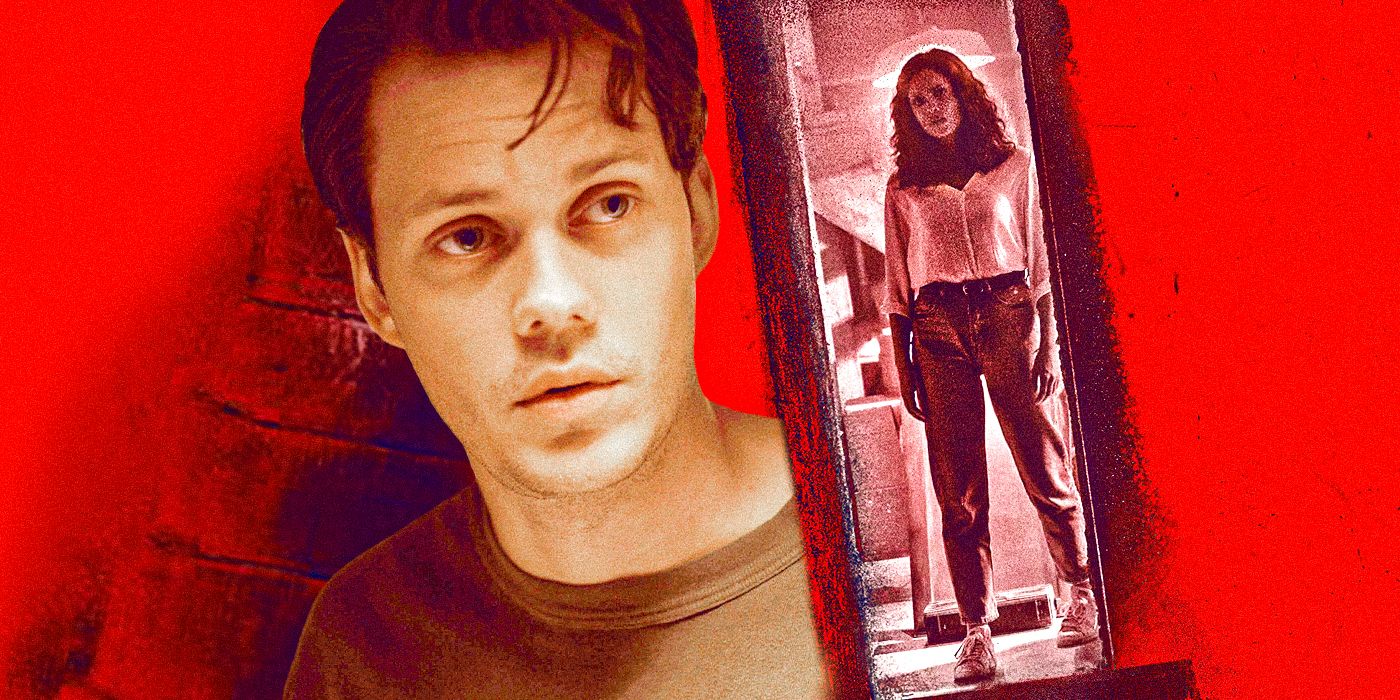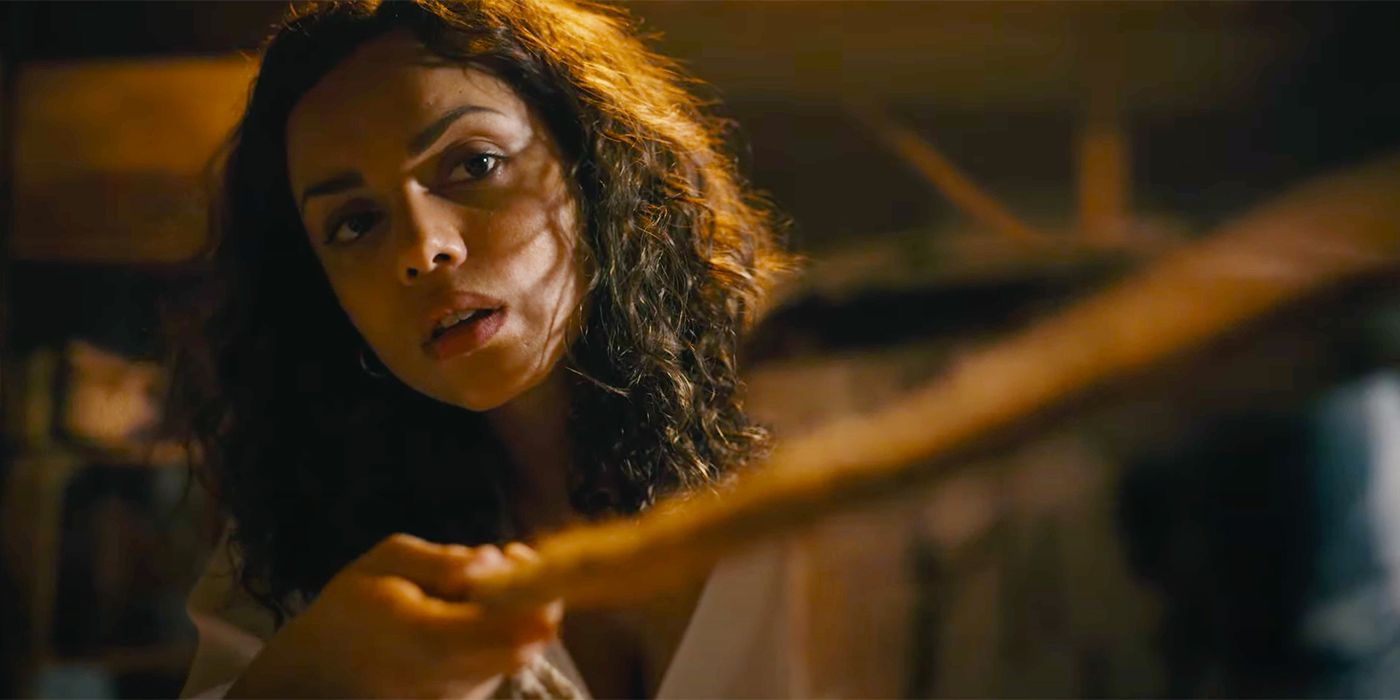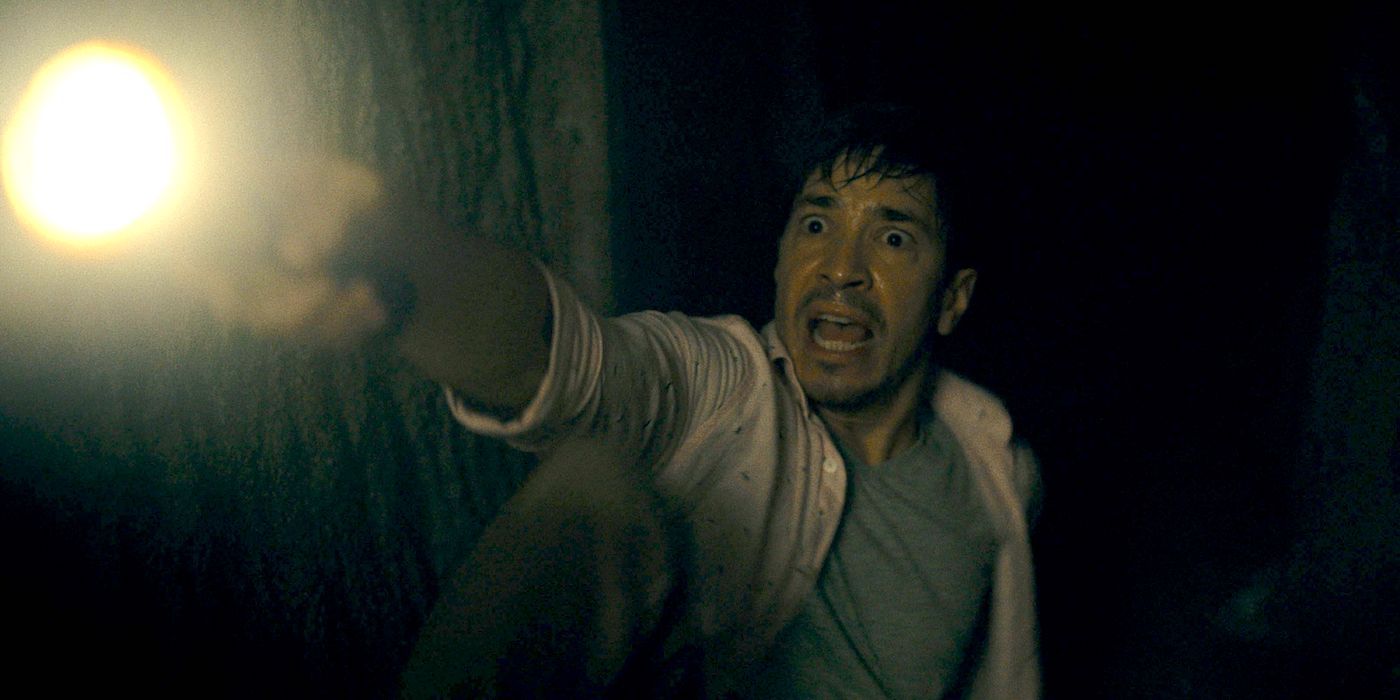Editor's Note: The following contains spoilers for the film Barbarian. Proceed with caution.
Anyone even remotely familiar with horror movies knows the final girl trope. Our final girl is the badass who confronts the killer at the end of the film and lives on to fight another day, that is, if she doesn’t die in the sequel. Over time, many have become exasperated with the predictability of the final girl’s survival or have written long think pieces on how the trope serves to further subjugate women by attributing the final girl’s survivability as contingent to her virtuousness. So it’s not at all surprising that the last person left standing in Zach Cregger’s film Barbarian is our heroine Tess (Georgina Campbell). Despite all odds, Tess emerges from beneath the bowels of Barbary Street (mostly) intact– at least she keeps her eyes. But what’s a final girl without any cuts or bruises? After being held in captivity and relentlessly chased throughout the second and third acts of the film, Tess’ survival seems to almost beg the audience to suspend belief. The ending to Barbarian, however, isn’t the obligatory satisfaction of the final girl trope it seems to be. In fact, the finale relies on the fact that the last one standing is a woman. After all, it’s hard to believe that the Mother (Matthew Patrick Davis) would have ever willingly let a man kill her. Don’t worry, we’ll unpack this together.
At the very beginning of Barbarian, we meet Tess as she pulls up to the home she rented for her stay in Detroit. All seems pretty normal until she opens up the lockbox and the keys are missing. After panicking for a second, a random guy named Keith (Bill Skarsgård) opens the door and informs her that he’s staying there. Alarm bells immediately start ringing in Tess’ head. From the moment they realize the rental is double booked, Tess instantly sees Keith as suspicious, whereas he seems a little too hell-bent on proving that he’s no threat to her. At first, she thinks he might’ve broken in and proceeds to snoop around. She carefully excuses herself to the bathroom and takes the chance to take a picture of his license and takes a look inside his toiletry bag. Nearly every attempt Keith makes to help Tess feel more comfortable makes him seem more suspicious to both Tess and the audience. If Tess didn’t already think he drugged her tea, she sure as hell became a bit more suspicious of him after his painfully awkward assertion that he had no intention to drug her while opening a bottle of wine. Casting Bill Skarsgård as Keith was genius in this regard considering his role as the iconic Pennywise in the recent It movies.
Skarsgård’s reputation as a horror villain automatically puts the audience on edge when he opens the door. To a large extent, his casting forces the audience to further empathize with Tess’ perspective in thinking that something bad will inevitably happen. He is the perfect red herring. Once Tess and Keith are able to interact on a human basis, she relaxes enough to explain to him how many precautions she had to take before calming down, while he never particularly felt as though his safety was ever in jeopardy. She even remarks how, if roles were reversed, Keith would have just settled right in without a second thought. This first act does a brilliant job at establishing the female gaze that governs most of the film. Women are often socialized to constantly watch over their shoulder and to regard unfamiliar men with caution. It’s the marked differences in socialization, and overconfidence in their own safety, that brings each of the men to their demise.
Cause of Death: Hubris
After Tess later stumbles upon the home’s underground labyrinth, she immediately tells Keith that they have to go. Instead of listening to her, Keith insists on looking at it himself before he believes her claims that they’re in danger. They argue for a second before Tess relents and agrees to wait for him upstairs. Once Keith doesn’t return, she reluctantly goes to search for him and follows his cries for help. Tess assumes he’s in the same room she described, but he actually made his way even further into the underground tunnels. Once she finds him, he tells her that something bit him and is killed in seconds before the camera cuts to black. It’s assumed that Tess is also dead when we’re thrust into the world of AJ (Justin Long), a disgraced sexual predator in the film industry.
AJ finds his way to Detroit after being forced to confront his financial strife in the aftermath of rape allegations. In an effort to scrounge up money to pay legal fees, he aims to sell some of his property. AJ just so happens to own that same home on Barbary Street and walks in to find all of Tess’ and Keith’s belongings still in the home. Instead of being absolutely terrified that people are presumably in his house, AJ gets angry at the inconvenience before deciding to go to the bar and eventually returns to drunkenly pass out. The only reason AJ ends up underneath the home is because he gets greedily caught up in measuring its unending dimensions in a last-ditch effort to add value to the home before he sells it. Seemingly oblivious to how damn creepy the basement is, AJ leads himself deeper and deeper into the caverns as he happily hums to the thought of increasing dollar signs. Similar to Keith, he is never on guard until it’s too late. It remains ambiguous as to whether the Mother would have killed him just as quickly as Keith because AJ runs right into where Tess is imprisoned, and she manages to close the top of the cage before the Mother could get to him.
The following moments solidify his fate at the end of the film. Tess quickly informs him of what he has to do in order to survive: Keep calm and drink the milk offered to him in the bottle. AJ, like Keith, does not listen to her and remains a target of Mother’s rage while Tess manages to use the distraction to temporarily escape. Later on, after Tess goes back to save AJ, the two seek refuge with Andre (Jaymes Butler) near the water tower. Again, Tess informs the men that they’re still in danger and need to leave. Also again, Andre rebukes her by claiming she’s never shown up in the 15 years he lived there. Almost like clockwork, the Mother shows up moments later and immediately rips Andre’s arm from his body before beating him with it. While the men’s pride tends to lead to their respective demises, Tess’ fatal flaw is her desire to save them. That’s the only reason she got into this mess in the first place.
The Horrors of Womanhood
So after all the trouble that Tess has caused the Mother, why does she get to live? The answer lies in that little book titled Jane Eyre that AJ briefly pulls out of Tess’ luggage earlier in the film. A huge subplot of the novel involves a woman, Bertha, held against her will in the attic of her husband’s home. She manages to wander the house at night and is mistaken as a ghost by Jane, the new object of her husband’s affections. This little Easter egg adds an extra layer to the film’s interrogation of the historical and social treatment of women. Frank, the former owner of the house, was able to keep dozens of women locked up right underneath the noses of his neighbors without so much as a second glance. Even after the neighborhood deteriorated, Frank’s legacy of torture remained. In an interesting parallel to Tess’ perspective in the first act, the Mother is also shown to be socialized to fear men similarly to Tess, despite never having the opportunity to live life outside the basement. It can be deduced that she fears men because her only exposure to them is through Frank, the man who imprisoned and raped her. The only time we ever see her cower back into the darkness is when AJ makes it to the door of Frank’s room.
To this end, the surprise ending of the film where the Mother willingly sacrifices herself to save Tess and, later, allows Tess to kill her signifies her innate trust in and solidarity with other women. Even after Tess' first attempt to kill her, the Mother still only wants to save her. The film’s final twist is giving the Mother an unexpectedly sympathetic ending. Up until the last few minutes of the film, she is only shown as a monster. In a final moment of tenderness, the Mother signals a kiss to Tess and calls her "baby" before accepting her death. Tess doesn't survive because of a trope, Tess survives because of the centuries of resilience women have had to learn to continue surviving in this world.



